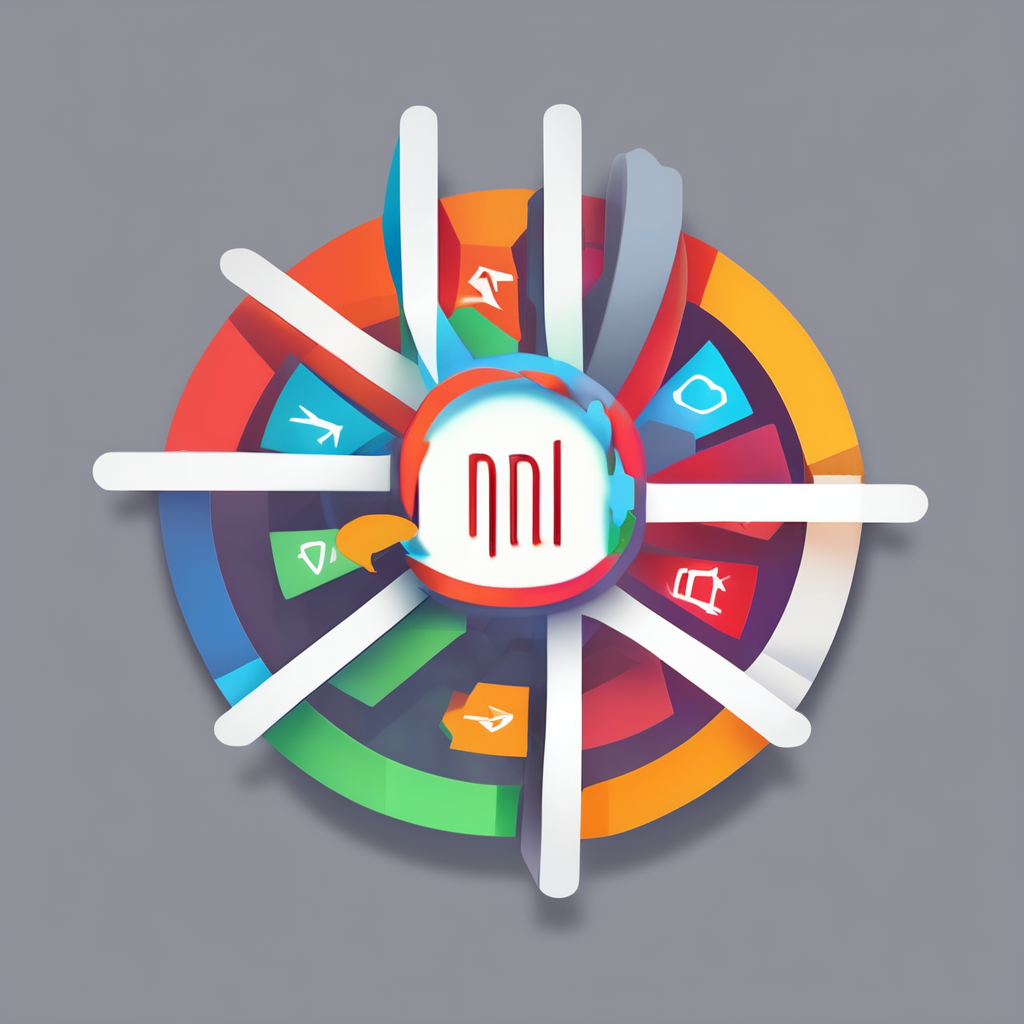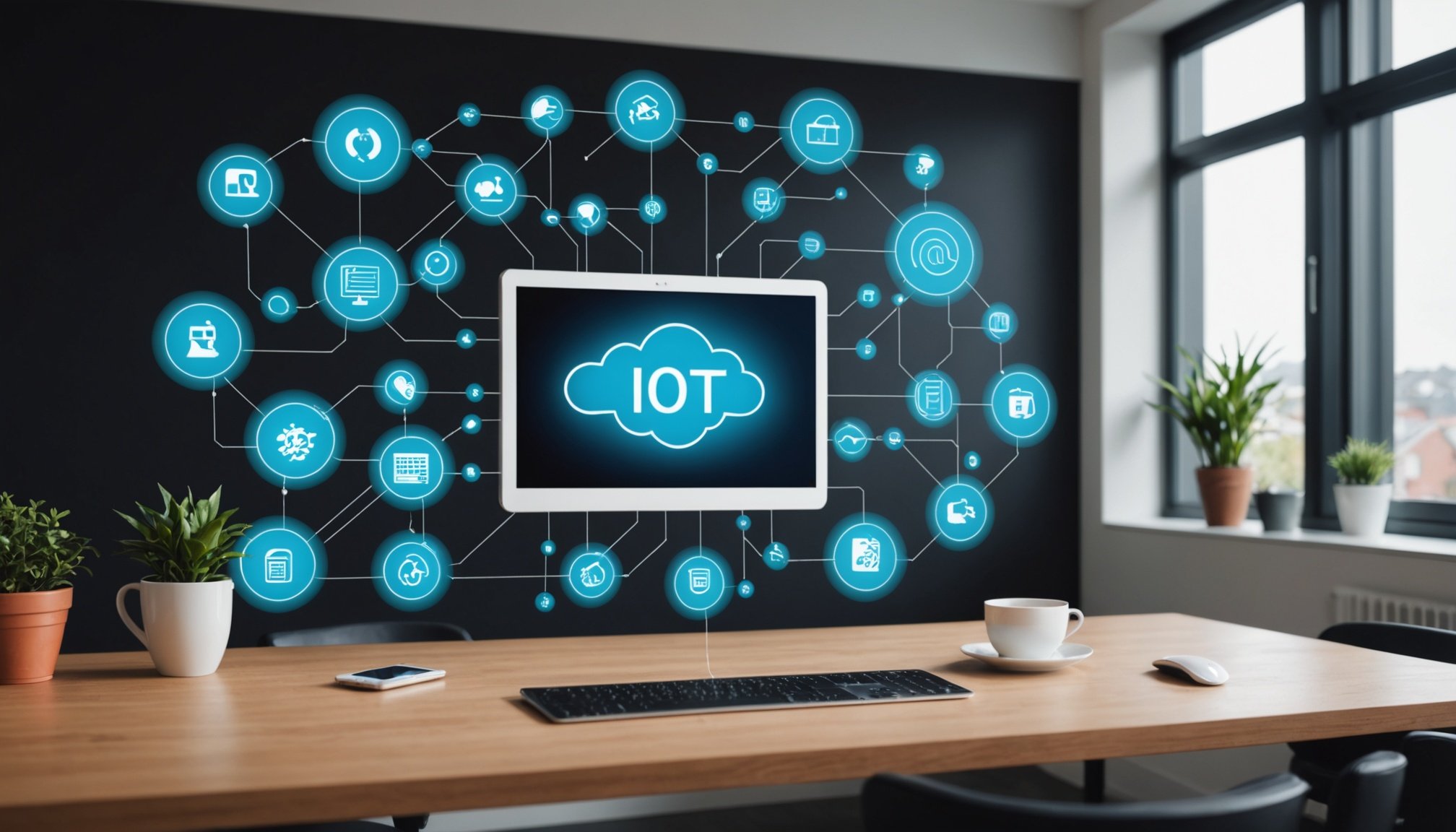Understanding Energy Efficiency and IoT
In today’s world, energy efficiency is crucial as it minimizes energy waste, reduces costs, and fosters sustainability. This is where IoT devices shine, seamlessly integrating into our lives, optimizing energy use. But what exactly is the role of IoT in enhancing energy efficiency? Simply put, IoT devices can collect and analyze data in real-time, automating energy-saving measures and providing insights for optimal usage.
One of the most intriguing aspects of IoT technology is how it is leveraged for energy management. For instance, smart technology in the form of smart thermostats adjusts temperatures based on occupancy patterns. Similarly, automated lighting control systems turn off lights when rooms are unoccupied, ensuring minimal energy use.
Also to read : Enhancing cybersecurity: strategies for tech companies to effectively tackle and reduce cyber threat risks
Current trends in IoT see a rise in innovative energy management solutions. Businesses and homeowners alike are exploring IoT devices that offer precise control and monitoring capabilities, leading to improved energy efficiency. By incorporating these advancements, we see smarter energy distribution, minimized waste, and enhanced convenience for users. As we continue to embrace smart technology, understanding its role in conservation will be pivotal in promoting a more efficient future.
Key IoT Devices for Enhancing Energy Efficiency
IoT devices like smart thermostats, lighting control systems, and energy monitors are pivotal in elevating energy efficiency. They automate tasks and provide detailed insights into energy usage.
This might interest you : Avoiding the traps: top challenges in embracing cloud-based solutions
Smart Thermostats
Smart thermostats are game-changers for energy savings. They adjust temperatures based on real-time data, reducing energy consumption without sacrificing comfort. Case studies show that installing a smart thermostat can lower energy bills by similar margins. For instance, ExampleCo reported a 15% reduction. When comparing models, Nest, Ecobee, and Honeywell offer distinct features; Nest uses learning algorithms, Ecobee provides remote sensors, while Honeywell connects seamlessly with multiple smart home systems.
Smart Lighting Systems
These systems optimise energy use by adjusting lights based on occupancy and natural light sensors. In residences, a smart bulb can decrease usage by up to 80% compared to traditional lighting. Commercially, systems like Philips Hue or Lutron provide tailored solutions catering to larger spaces, ensuring cost-effective illumination.
Energy Monitoring Devices
Energy monitors track consumption in real time, offering precise data for energy efficiency strategies. Top products like Sense and Emporia allow users to identify energy-draining devices, significantly cutting costs. A noteworthy case is HomeCo, where employing Sense led to a 20% reduction in electricity expenses.
Practical Solutions and Tips for Implementing IoT for Energy Efficiency
When it comes to maximizing energy conservation tips with IoT, the first step is strategic integration of devices. Consideration of your home’s or business’s specific energy needs is vital. Focus on zones with the highest consumption and implement targeted solutions.
IoT Best Practices
- Device Selection: Choose IoT devices with features suited to your environment. Smart thermostats and lighting systems are initial worthy investments.
- Integration Strategies: Ensure seamless device connectivity. Opt for systems compatible with existing technology frameworks.
Optimizing Device Settings
For IoT best practices, adjust settings for peak efficiency. Utilize schedules and automation capabilities to minimize unnecessary energy use. Ensure all integrations are set to recognize occupancy patterns and daylight utilization. Through thoughtful configuration, devices can deliver more energy-efficient performance.
Data Analysis for Energy Management
Analyzing data is a powerful way to manage energy consumption efficiently. Use real-time insights provided by energy monitors to identify high-use periods. Implement energy-conserving actions based on these insights. Such proactive measures not only enhance energy efficiency but also contribute to cost savings and increased sustainability.
Benefits of Utilizing IoT for Energy Efficiency
Embracing IoT technology for energy efficiency yields significant financial benefits. By automating energy consumption, users experience substantial cost savings through reduced energy bills. For example, businesses adopting IoT devices witness a consistent decrease in energy expenditure, enhancing their financial stability. Smart thermostats and energy monitors play pivotal roles here, offering precise control and efficient energy management.
Another crucial aspect is the positive environmental impact. Enhanced energy efficiency directly reduces carbon footprints, contributing to global sustainability efforts. IoT devices ensure minimal energy waste by tuning operations to environmental conditions and occupancy, promoting eco-friendly practices. Individuals and enterprises adopting these technologies actively participate in conservation.
Moreover, user convenience is vastly improved with IoT devices. Automated systems adapt settings according to user behaviour. Whether adjusting lighting or optimizing heating, users enjoy seamless, hassle-free interactions with their environments. Devices like smart lighting systems provide tailored experiences, enhancing everyday life.
In summary, integrating IoT for energy efficiency not only trims expenses but also supports environmental health and elevates user experience, making it an enticing option for forward-thinking individuals and companies.
Real-World Examples of IoT Enhancing Energy Efficiency
Real-world case studies underscore how IoT devices revolutionize energy efficiency, illustrating tangible benefits across various sectors. Notably, smart technology has been pivotal for businesses like General Motors, which excelled by implementing IoT-driven energy solutions, significantly reducing their energy consumption by more than 30% over three years. This success story highlights the potential of IoT in achieving substantial efficiency improvements.
In the hospitality industry, hotels have successfully integrated smart thermostats and energy monitors, achieving remarkable cost savings. For example, hotels deploying these technologies often report a 20% cutback in energy costs, enhancing both profitability and sustainability.
On an urban scale, cities like Barcelona have adopted smart lighting systems with adaptive brightness, drastically cutting energy usage while maintaining safety. Such innovative applications not only address local needs but also contribute toward broader environmental goals.
These success stories illuminate how IoT is transforming energy management across industries, offering models from which others can draw inspiration. As such, these case studies demonstrate the broader applicability and effectiveness of IoT solutions in enhancing energy efficiency.
Potential Challenges and Considerations
Implementing IoT devices for energy efficiency comes with potential hurdles and careful consideration is required. One primary concern revolves around privacy concerns. As these devices collect and transmit data, protecting personal information is paramount. It’s crucial to choose devices with strong encryption and security protocols to safeguard user data.
Installation issues are another challenge frequently encountered. While smart technology offers immense benefits, the setup can be complex. Users often face compatibility problems with existing systems, requiring technical support or professional installation services. Preparing adequately and researching device compatibility can mitigate these issues.
Cost analysis is equally important when adopting IoT devices. Initial investments can be substantial, but it’s essential to evaluate the return on investment. Consider long-term benefits such as cost savings through reduced energy consumption. Buyers should conduct a thorough cost-benefit analysis to determine financial viability.
In conclusion, while the integration of IoT in energy management promises numerous advantages, addressing privacy, installation, and cost concerns is vital for successful implementation. By acknowledging these challenges and strategically planning, users can maximize the efficiency gains of IoT technology.
Future Trends in IoT and Energy Efficiency
As we look toward the future, emerging technologies in the IoT realm are set to play a pivotal role in advancing energy efficiency. One promising area is the development of more sophisticated smart technology that enables enhanced automation and precise energy management. These innovations are expected to drive significant improvements in how both residential and commercial settings optimize their energy use.
Future innovations may include advanced machine learning algorithms integrated into IoT systems. These algorithms will enable devices to learn and anticipate user behavior more accurately, resulting in further energy savings. As IoT technology evolves, greater connectivity among devices could lead to a unified, smart ecosystem capable of harmonizing energy consumption across multiple platforms.
The focus on sustainability will undoubtedly propel these advancements. Manufacturers and developers are prioritizing eco-friendly solutions that not only conserve energy but also reduce carbon footprints. This alignment with sustainability goals ensures the continued relevance of IoT in future energy management strategies.
In the coming decade, we anticipate a surge in IoT devices that are not only efficient but also seamless and intuitive, providing users with an effortless way to contribute to environmental conservation efforts.







